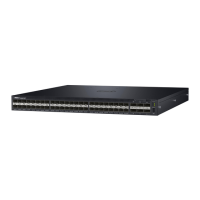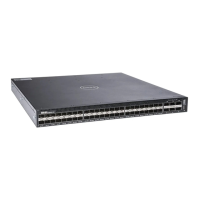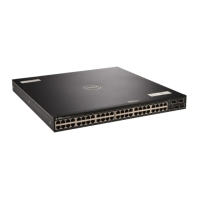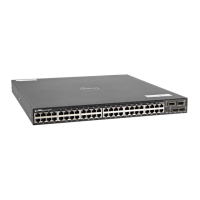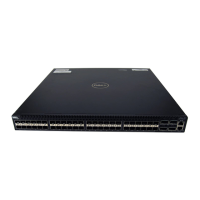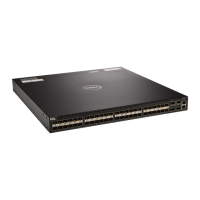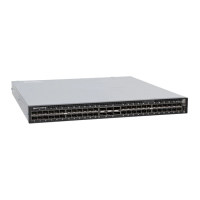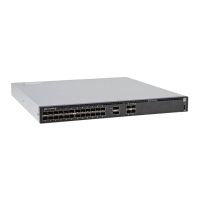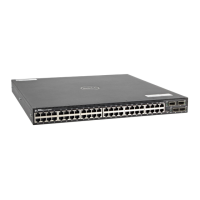ip igmp snooping querier
IGMP snooping querier does not start if there is a statically configured multicast router interface in the
VLAN.
The switch may lose the querier election if it does not have the lowest IP address of all potential queriers
on the subnet.
When enabled, IGMP snooping querier starts after one query interval in case no IGMP general query (with
IP SA lower than its VLAN IP address) is received on any of its VLAN members.
Adjusting the Last Member Query Interval
To adjust the last member query interval, use the following command.
When the querier receives a Leave message from a receiver, it sends a group-specific query out of the ports
specified in the forwarding table. If no response is received, it sends another. The amount of time that the
querier waits to receive a response to the initial query before sending a second one is the last member query
interval (LMQI). The switch waits one LMQI after the second query before removing the group-port entry
from the forwarding table.
• Adjust the last member query interval.
INTERFACE VLAN mode
ip igmp snooping last-member-query-interval
Fast Convergence after MSTP Topology
Changes
When a port transitions to the Forwarding state as a result of an STP or MSTP topology change, Dell
Networking OS sends a general query out of all ports except the multicast router ports. The host sends a
response to the general query and the forwarding database is updated without having to wait for the query
interval to expire.
When an IGMP snooping switch is not acting as a querier, it sends out the general query in response to the
MSTP triggered link-layer topology change, with the source IP address of 0.0.0.0 to avoid triggering querier
election.
Egress Interface Selection (EIS) for
HTTP and IGMP Applications
You can use the Egress Interface Selection (EIS) feature to isolate the management and front-end port
domains for HTTP and IGMP traffic. Also, EIS enables you to configure the responses to switch-destined
traffic by using the management port IP address as the source IP address. This information is sent out of the
switch through the management port instead of the front-end port.
Internet Group Management Protocol (IGMP) 440
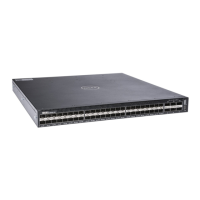
